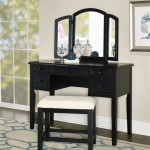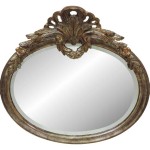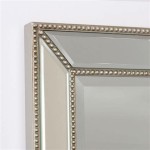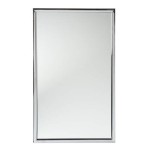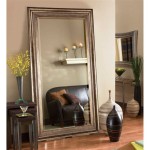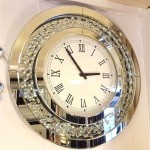Baroque Wall Mirrors: A Reflection of Opulence and Grandeur
Baroque wall mirrors represent a significant element of the broader Baroque decorative arts movement, flourishing from the late 16th to the mid-18th century. These mirrors, often large and elaborately ornamented, served both functional and symbolic purposes within the opulent interiors of the period. Their reflective surfaces amplified natural and candlelight, creating a sense of spaciousness and drama within often dimly lit spaces. Beyond their practical function, baroque mirrors also served as powerful status symbols, reflecting the wealth and sophistication of their owners.
The Baroque period embraced extravagance and theatricality, characteristics prominently displayed in the design of wall mirrors. Ornamentation typically featured elaborate carvings, often incorporating motifs inspired by nature, mythology, and classical antiquity. Common elements include acanthus leaves, scrolling vines, shells, putti (cherubs), and grotesque masks. These intricate details, frequently gilded or silvered, added to the mirrors’ luxurious appeal.
The construction of Baroque wall mirrors involved a variety of materials and techniques. The mirror plate itself was initially made of blown glass, a process prone to imperfections and distortions. Later, cast glass became more prevalent, allowing for larger and clearer reflections. The frames, integral to the overall design, were typically constructed from wood, which could be readily carved and shaped. Other materials, such as gesso, a mixture of plaster and glue, were used to create raised surface decorations before gilding or painting.
Gilding played a crucial role in the aesthetics of Baroque mirrors. The application of thin gold leaf to the frame enhanced its decorative elements, creating a shimmering surface that reflected light and contributed to the overall sense of opulence. Silvering, while less common than gilding, also provided a luxurious finish. These metallic accents further highlighted the intricate carvings and contributed to the mirror's dramatic effect.
Several distinct styles of Baroque wall mirrors emerged throughout the period, reflecting evolving tastes and regional variations. The Italian Baroque favored bold, dynamic designs with heavy ornamentation, often featuring large, prominent crestings. The French Baroque, particularly during the reign of Louis XIV, exhibited a more refined elegance, with intricate detailing and a greater emphasis on symmetry. The Flemish and Dutch Baroque styles often incorporated elements of Flemish painting and still life into the mirror's frame, creating unique and visually captivating pieces.
The size and placement of Baroque wall mirrors also played a significant role in their impact on an interior. Large mirrors were strategically placed to maximize the reflection of candlelight and create an illusion of greater space. They were often hung above fireplaces or consoles, becoming focal points within a room. Smaller mirrors, while less commanding, still served as decorative accents, adding to the overall sense of richness and detail.
The influence of Baroque wall mirrors extended beyond their functional and decorative roles. They served as potent symbols of wealth and prestige, reflecting the societal values of the period. The cost of materials, craftsmanship, and elaborate ornamentation ensured that these mirrors were primarily accessible to the aristocracy and wealthy merchant class. Their presence within a home served as a visual declaration of the owner's status and taste.
The legacy of Baroque wall mirrors continues to resonate in contemporary interior design. Reproductions and adaptations of these ornate pieces remain popular, adding a touch of historical grandeur to modern spaces. Antique Baroque mirrors are highly sought after by collectors, representing significant investments in art and history. Their enduring appeal lies in their ability to evoke a sense of timeless elegance and sophistication.
Identifying authentic antique Baroque wall mirrors requires careful examination and consideration of various factors. The quality of the glass, the construction of the frame, and the style of ornamentation are key indicators of age and authenticity. The presence of age-related wear and imperfections, such as crazing in the gilding or minor chips in the glass, can also contribute to a mirror's authenticity and value. Consulting with reputable antique dealers and appraisers is essential for verifying the provenance and value of antique Baroque wall mirrors.
The market for Baroque wall mirrors caters to a wide range of tastes and budgets. From museum-quality antique pieces to more affordable reproductions, there are options available to suit various interior design schemes. When selecting a Baroque wall mirror, one should consider factors such as size, style, and the overall aesthetic of the space. The mirror should complement the existing décor, enhancing the room’s ambience without overpowering it. Whether an antique or a reproduction, a Baroque wall mirror offers a unique opportunity to introduce a touch of historical elegance and grandeur into a modern setting.
The continued popularity of Baroque-inspired design elements demonstrates the enduring influence of this artistic period. From furniture to lighting fixtures and decorative accessories, the opulence and drama of the Baroque aesthetic continue to captivate. Baroque wall mirrors, with their intricate detail and reflective surfaces, remain a sought-after addition to both traditional and contemporary interiors, reflecting a timeless appreciation for craftsmanship and artistic expression.

Beautiful Wall Mirror In Italian Baroque Style Osman Antique

Italian Baroque Frame Wall Mirror Green Square

19th Century Great Venice Baroque Wall Mirror Hand Carved Walnut Gold Leaf For At 1stdibs

Wall Mirror Baroque Valentina Gold 100x190cm Kare Schweiz

Baroque Wall Mirror In Gold Plated Wood 18th Century France For At Pamono

Top Gold Baroque Wall Mirror Hamilton Hills

Baroque Wall Mirror Furniture And The Decorative Arts 2024 05 10 Estimate Eur 3 000 To 4 Dorotheum

Antique Baroque Wall Mirror Gilt Golden Ornate Rococo Glass Bedroom Decor

Casa Padrino Baroque Wall Mirror Silver 54 X H 172 Cm Living Room Antique Style Furniture

Classic Baroque Wall Mirror Antique Gold Leaf Made In Italy

